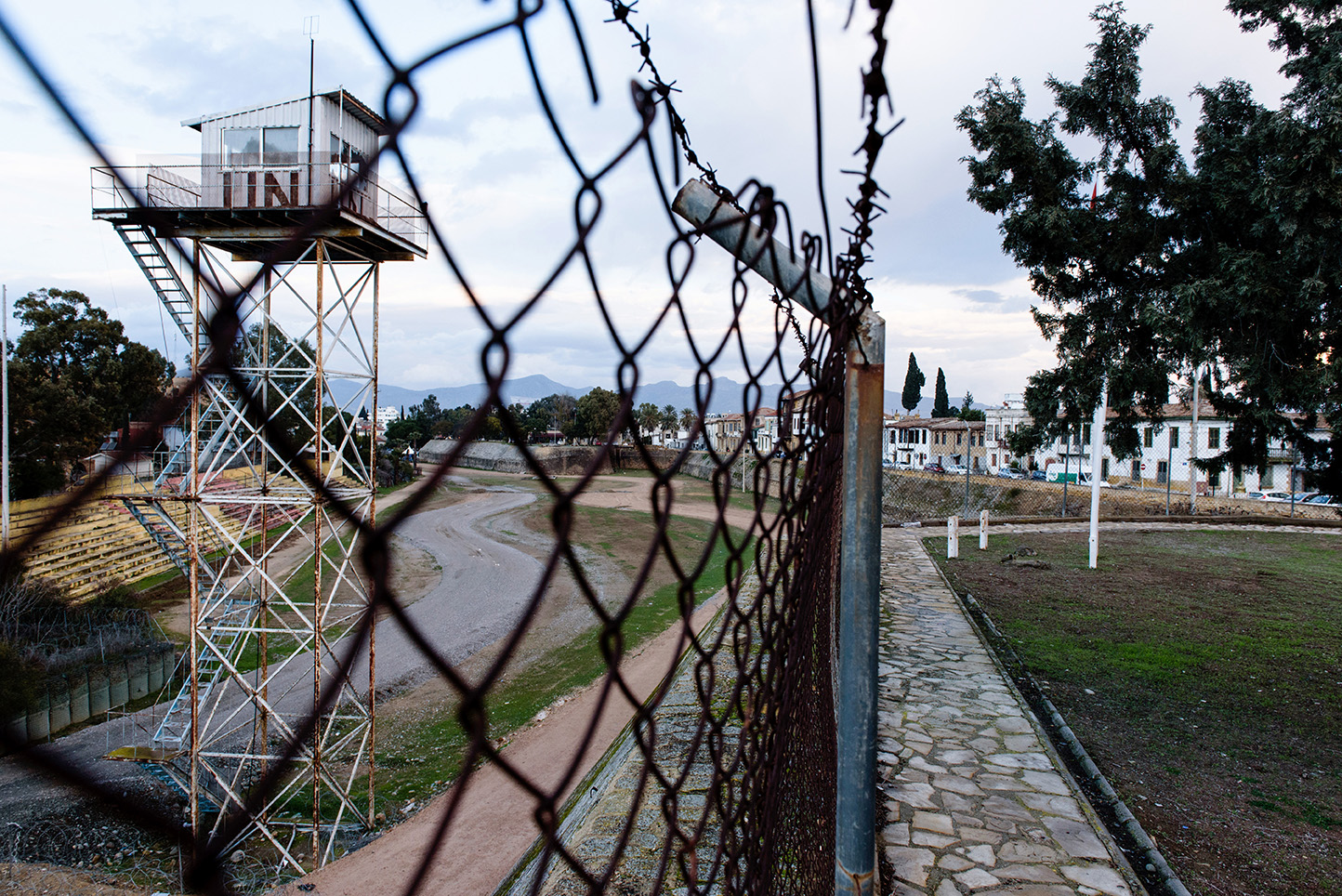Cohesion policy: the controversial revolution of the future EU budget
Cohesion funds have also been incorporated into the new national and regional partnership plans envisaged in the proposal for the 2028-2034 Multiannual Financial Framework, which ties the disbursement of funding to the implementation of specific reforms. But the Commission is already being accused of centralizing management and marginalizing the regions

Politica-di-coesione-la-rivoluzione-controversa-del-futuro-bilancio-dell-UE-1
Brussels, Belgium © Respiro/Shutterstock
After months of anticipation, rumors, and alarm over the new direction of cohesion policy, the European Commission has presented its proposal for the future post-2027 Multiannual Financial Framework of nearly €2 trillion, confirming fears of a possible centralization of one of the key pillars of the EU budget in Brussels and the 27 capitals.
The revolution of the 2028-2034 Multiannual Financial Framework implemented by Commission President Ursula von der Leyen is based on a substantial innovation for cohesion policy funds (and beyond): the establishment of national and regional partnership plans – which cover nearly half of the entire seven-year budget – and the linking of funding to the implementation of specific reforms, based on the framework inspired by the Recovery and Resilience Facility (RRF) that governs the NRRPs for post-COVID economic recovery.
However, the greater centralization of the entire financial structure in the hands of the Member States and the Commission has already sparked outrage – since the proposal was presented – not only among representatives of civil society and European regions, but also among all the political groups that comprise the centrist majority in the European Parliament, including the European People’s Party (EPP), of which President von der Leyen herself is a representative.
How the new EU budget is composed
The proposed Multiannual Financial Framework 2028-2034 – which will have to be negotiated and approved by the co-legislators of the Parliament and the Council of the European Union – is worth €1.9 trillion and consists of four pillars: €1 trillion for economic, social, and territorial cohesion (which includes the National and Regional Partnership Plans), €590 billion for competitiveness and security, €215 billion for "Global Europe" (the pillar for the EU’s external action worldwide), and €117 billion for administrative expenditure.
According to the Commission , the aim is to provide "greater flexibility" to the multiannual budget by simplifying financial programs, deliver a "targeted impact where it is most needed," boost competitiveness to "lead the global race" towards clean and smart technologies, and build a European Defence Union "able to protect itself and act swiftly when needed."
The Conditionality Regulation will continue to protect the entire EU budget from rule of law violations, and the National and Regional Partnership Plans will include additional prerequisites. For example, to approve the plans, the 27 capitals will have to demonstrate that they have adequate mechanisms in place to ensure compliance with both the rule of law principles and the EU Charter. In the event of a confirmed violation, they will have to remedy the situation "in a timely manner," under penalty of reducing support from Brussels. Furthermore, the Commission may block payments in whole or in part at any time during implementation "in line with the principle of proportionality," taking into account the nature, duration, gravity, and scope of the violation.
"The next budget will be the most ambitious ever proposed. It is more strategic, more flexible, and more transparent. We are investing more in our responsiveness and independence," President von der Leyen promised at a press conference on July 16. "It is crucial that Member States’ contributions to the EU budget remain constant, as we propose a fundamental shift in own resources," the main sources of revenue for a budget in which annual expenditure cannot exceed revenue.
In this regard, to finance the priorities for the next seven-year period and to begin repaying the loans contracted under Next Generation EU, the Commission has established five new own resources: the EU Emissions Trading System (ETS), the Carbon Border Adjustment Mechanism (CBAM), a uniform rate on the weight of uncollected e-waste, a European rate in addition to the minimum national rate applied by each Member State to tobacco products, and an annual flat-rate contribution paid by companies (operating and selling in the EU) with an annual net turnover of at least €100 million.
Cohesion in the new national and regional plans
One of the key issues in the proposal for the new multiannual budget concerns the future of cohesion. Cohesion policy funds will be grouped together with those of the Common Agricultural Policy (CAP), social policy, fisheries policy, and migration, border management and internal security within the national and regional Partnership plans , where the disbursement of funding is linked to the achievement of the reform targets.
The radical overhaul is apparent from two new developments. The first concerns the fact that the current approximately 540 programs will be replaced by 27 national and regional partnership plans, one for each Member State. The second concerns the division of funds: while cohesion policy and the common agricultural policy have historically each absorbed a third of the EU budget, in the 2028-2034 period they will together represent less than 40% of total resources.
€453 billion is earmarked for cohesion, "only" 23%, although this represents an increase of €60 billion compared to the current seven-year budget. In practice, however, this could translate into a significant cut, since future funds could also be used to replace the regional part of the common agricultural policy and to support fishermen and tourism. The mandatory minimum amount for less developed regions – with a safeguard to ensure at least the same level of funding as the current allocation – is capped at €218 billion, contrary to the requests made by regional representatives in Brussels.
Promising that cohesion and the common agricultural policy will remain at the heart of the new multiannual budget, the Commission ensures that the national and regional Partnership Plans will "foster convergence and reduce regional disparities," identifying investments and reforms needed "to better address the future challenges" of Member States and regions. The 27 plans will be developed and implemented in collaboration between the Commission, national and regional authorities, local communities, and stakeholders. "This integrated programming process will allow for better coordination across policy areas and a more targeted approach."
A contested proposal
"After months of unwarranted secrecy, the European Commission has presented a complex and controversial proposal that jeopardises the role of regions and cities in the European project," attacked the President of the European Committee of the Regions, Kata Tüttő, who called the von der Leyen cabinet’s plan "monstrous" because it "aims to swallow up cohesion policy and break its backbone through nationalization and centralization."
The head of the EU’s assembly of local and regional representatives noted that there is a lack of guarantees that all regions will benefit from cohesion investments, as well as legal provisions defining regional involvement in managing the funds and the willingness to evaluate and monitor the impact of the investments. "The Commission’s priority appears to be to increase the share of the EU budget under its direct control, while leaving Member States complete flexibility over other funds," emphasizes President Tüttő, who calls for the co-legislators to intervene to "fundamentally" amend the proposal so as not to "marginalize" regions and cities.
The strongest support for the regions comes from the European Parliament, with an extremely negative reaction to the presentation of the proposal by Piotr Serafin, Commissioner for Budget, Anti-Fraud and Public Administration, to the Committee on Budgets (BUDG). Rapporteurs Siegfried Mureșan (EPP) and Carla Tavares (S&D) accuse the proposal of being "simply inadequate," reducing the EU budget to a "lowest common denominator of national preferences" and undermining the foundations of upward convergence, "the cornerstone of the European project," by marginalizing the European Parliament’s role in budgetary control.
But the biggest blow to the Commission’s hopes for a smooth approval of the 2028-2034 budget came from the leaders of the majority groups in the European Parliament (EPP, Social Democrats, Greens, and Liberals). "Lessons must be learned from past experiences, which is why we are critical of the creation of the so-called National and Regional Partnership Plans as they have been conceived and presented, which in their current form could hinder the European dimension," the joint statement reads. "We intend to use all the powers at our disposal to ensure that our positions are heard and respected," with the aim of supporting "the European project, our values, and our agreed priorities with adequate financial resources and political courage."
This article is published as part of the "Cohesion4Climate" project, co-funded by the European Union. The EU is in no way responsible for the information or views expressed within the project; the sole responsibility for the content lies with OBCT.
Tag: Cohesion for Climate
Cohesion policy: the controversial revolution of the future EU budget
Cohesion funds have also been incorporated into the new national and regional partnership plans envisaged in the proposal for the 2028-2034 Multiannual Financial Framework, which ties the disbursement of funding to the implementation of specific reforms. But the Commission is already being accused of centralizing management and marginalizing the regions

Politica-di-coesione-la-rivoluzione-controversa-del-futuro-bilancio-dell-UE-1
Brussels, Belgium © Respiro/Shutterstock
After months of anticipation, rumors, and alarm over the new direction of cohesion policy, the European Commission has presented its proposal for the future post-2027 Multiannual Financial Framework of nearly €2 trillion, confirming fears of a possible centralization of one of the key pillars of the EU budget in Brussels and the 27 capitals.
The revolution of the 2028-2034 Multiannual Financial Framework implemented by Commission President Ursula von der Leyen is based on a substantial innovation for cohesion policy funds (and beyond): the establishment of national and regional partnership plans – which cover nearly half of the entire seven-year budget – and the linking of funding to the implementation of specific reforms, based on the framework inspired by the Recovery and Resilience Facility (RRF) that governs the NRRPs for post-COVID economic recovery.
However, the greater centralization of the entire financial structure in the hands of the Member States and the Commission has already sparked outrage – since the proposal was presented – not only among representatives of civil society and European regions, but also among all the political groups that comprise the centrist majority in the European Parliament, including the European People’s Party (EPP), of which President von der Leyen herself is a representative.
How the new EU budget is composed
The proposed Multiannual Financial Framework 2028-2034 – which will have to be negotiated and approved by the co-legislators of the Parliament and the Council of the European Union – is worth €1.9 trillion and consists of four pillars: €1 trillion for economic, social, and territorial cohesion (which includes the National and Regional Partnership Plans), €590 billion for competitiveness and security, €215 billion for "Global Europe" (the pillar for the EU’s external action worldwide), and €117 billion for administrative expenditure.
According to the Commission , the aim is to provide "greater flexibility" to the multiannual budget by simplifying financial programs, deliver a "targeted impact where it is most needed," boost competitiveness to "lead the global race" towards clean and smart technologies, and build a European Defence Union "able to protect itself and act swiftly when needed."
The Conditionality Regulation will continue to protect the entire EU budget from rule of law violations, and the National and Regional Partnership Plans will include additional prerequisites. For example, to approve the plans, the 27 capitals will have to demonstrate that they have adequate mechanisms in place to ensure compliance with both the rule of law principles and the EU Charter. In the event of a confirmed violation, they will have to remedy the situation "in a timely manner," under penalty of reducing support from Brussels. Furthermore, the Commission may block payments in whole or in part at any time during implementation "in line with the principle of proportionality," taking into account the nature, duration, gravity, and scope of the violation.
"The next budget will be the most ambitious ever proposed. It is more strategic, more flexible, and more transparent. We are investing more in our responsiveness and independence," President von der Leyen promised at a press conference on July 16. "It is crucial that Member States’ contributions to the EU budget remain constant, as we propose a fundamental shift in own resources," the main sources of revenue for a budget in which annual expenditure cannot exceed revenue.
In this regard, to finance the priorities for the next seven-year period and to begin repaying the loans contracted under Next Generation EU, the Commission has established five new own resources: the EU Emissions Trading System (ETS), the Carbon Border Adjustment Mechanism (CBAM), a uniform rate on the weight of uncollected e-waste, a European rate in addition to the minimum national rate applied by each Member State to tobacco products, and an annual flat-rate contribution paid by companies (operating and selling in the EU) with an annual net turnover of at least €100 million.
Cohesion in the new national and regional plans
One of the key issues in the proposal for the new multiannual budget concerns the future of cohesion. Cohesion policy funds will be grouped together with those of the Common Agricultural Policy (CAP), social policy, fisheries policy, and migration, border management and internal security within the national and regional Partnership plans , where the disbursement of funding is linked to the achievement of the reform targets.
The radical overhaul is apparent from two new developments. The first concerns the fact that the current approximately 540 programs will be replaced by 27 national and regional partnership plans, one for each Member State. The second concerns the division of funds: while cohesion policy and the common agricultural policy have historically each absorbed a third of the EU budget, in the 2028-2034 period they will together represent less than 40% of total resources.
€453 billion is earmarked for cohesion, "only" 23%, although this represents an increase of €60 billion compared to the current seven-year budget. In practice, however, this could translate into a significant cut, since future funds could also be used to replace the regional part of the common agricultural policy and to support fishermen and tourism. The mandatory minimum amount for less developed regions – with a safeguard to ensure at least the same level of funding as the current allocation – is capped at €218 billion, contrary to the requests made by regional representatives in Brussels.
Promising that cohesion and the common agricultural policy will remain at the heart of the new multiannual budget, the Commission ensures that the national and regional Partnership Plans will "foster convergence and reduce regional disparities," identifying investments and reforms needed "to better address the future challenges" of Member States and regions. The 27 plans will be developed and implemented in collaboration between the Commission, national and regional authorities, local communities, and stakeholders. "This integrated programming process will allow for better coordination across policy areas and a more targeted approach."
A contested proposal
"After months of unwarranted secrecy, the European Commission has presented a complex and controversial proposal that jeopardises the role of regions and cities in the European project," attacked the President of the European Committee of the Regions, Kata Tüttő, who called the von der Leyen cabinet’s plan "monstrous" because it "aims to swallow up cohesion policy and break its backbone through nationalization and centralization."
The head of the EU’s assembly of local and regional representatives noted that there is a lack of guarantees that all regions will benefit from cohesion investments, as well as legal provisions defining regional involvement in managing the funds and the willingness to evaluate and monitor the impact of the investments. "The Commission’s priority appears to be to increase the share of the EU budget under its direct control, while leaving Member States complete flexibility over other funds," emphasizes President Tüttő, who calls for the co-legislators to intervene to "fundamentally" amend the proposal so as not to "marginalize" regions and cities.
The strongest support for the regions comes from the European Parliament, with an extremely negative reaction to the presentation of the proposal by Piotr Serafin, Commissioner for Budget, Anti-Fraud and Public Administration, to the Committee on Budgets (BUDG). Rapporteurs Siegfried Mureșan (EPP) and Carla Tavares (S&D) accuse the proposal of being "simply inadequate," reducing the EU budget to a "lowest common denominator of national preferences" and undermining the foundations of upward convergence, "the cornerstone of the European project," by marginalizing the European Parliament’s role in budgetary control.
But the biggest blow to the Commission’s hopes for a smooth approval of the 2028-2034 budget came from the leaders of the majority groups in the European Parliament (EPP, Social Democrats, Greens, and Liberals). "Lessons must be learned from past experiences, which is why we are critical of the creation of the so-called National and Regional Partnership Plans as they have been conceived and presented, which in their current form could hinder the European dimension," the joint statement reads. "We intend to use all the powers at our disposal to ensure that our positions are heard and respected," with the aim of supporting "the European project, our values, and our agreed priorities with adequate financial resources and political courage."
This article is published as part of the "Cohesion4Climate" project, co-funded by the European Union. The EU is in no way responsible for the information or views expressed within the project; the sole responsibility for the content lies with OBCT.
Tag: Cohesion for Climate










